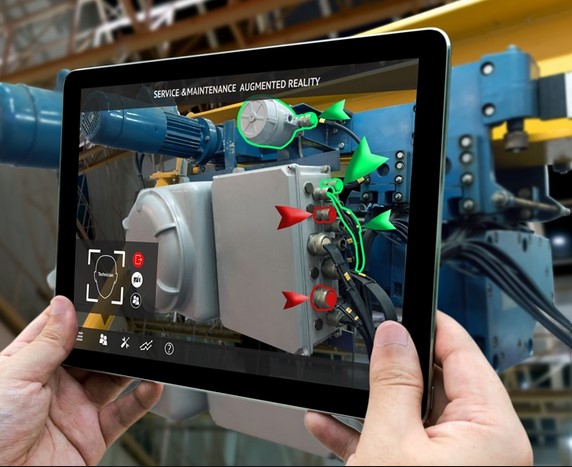Augmented reality can transform the customer experience by allowing potential customers to try it before they buy it. You can take see how that new couch will look in your living room before purchasing it. AR will also change the way maintenance is done in many situations. Imagine walking to a piece of equipment with AR glasses on and the oil filter location shows up on the glasses along with a picture of the tools needed to complete the job. Here are three ways to prepare your business for Augmented Reality.
So how do you prepare your business for Augmented Reality? Here are several things to consider.

1. Identify the goal for Augmented Reality
Given the many options and investments required for AR, it is important to establish a business goal and evaluate how you are performing against that goal. Will deploying Augmented Reality help you meet that business goal?
Let’s say you have many defects as you manufacture your product. Investigating the root cause of the defects, you learn that you have lots of new employees. Can deploying Augmented Reality improve how these employees are trained? Can AR help these employees follow the quality steps required to make the product correctly?
2. Define the user experience
In the example above, the best case for the deployment of AR is likely in the form of glasses employees can wear. When assembling the product, it can show tools, torques can be displayed, and it can display quality checks.
That is on the production side of things. What if it makes sense for you to deploy AR on your website or with your sales team? The deployment of Augmented Reality is different in each of these cases.
Once you understand the goal for AR deployment, considering who the end-user will be will narrow down the Augmented Reality options.
3. Build your library of content
You have established how you want to deploy AR within your business. Congratulations. The next step is to build the library of information for the technology to be successful.
Conduct a gap analysis comparing the desired future state to the current state. Develop your plan for capturing the information needed. If you are using AR on the assembly line, you might need digital work instructions.
If you want to use AR for maintenance purposes, you might need access to 3D models or CAD drawings of the machines. If you don’t have access to the information needed, start simply to capture it.
You can have an experienced maintenance person video themselves with a head held Go Pro changing a filter. Once you understand the information gaps, begin as simply as you can to fill those gaps.
As AR is becoming more prevalent by the day, tools to support the data collection are being developed at a rapid pace.
Unity is an engine you can use to create 2D and 3D experiences.
Lumberyard is from Amazon. It’s free to use, but you pay for AWS services.
Unreal Engine is built on C++ and can create different uses across different platforms.
If you answer these considerations I know you will prepare your business for Augmented Reality.
As always, it’s an honor to serve you, and I hope this helps you and your organization get a little better today.
Follow me on LinkedIn
Follow me on Twitter
Listen to the podcast episode here
